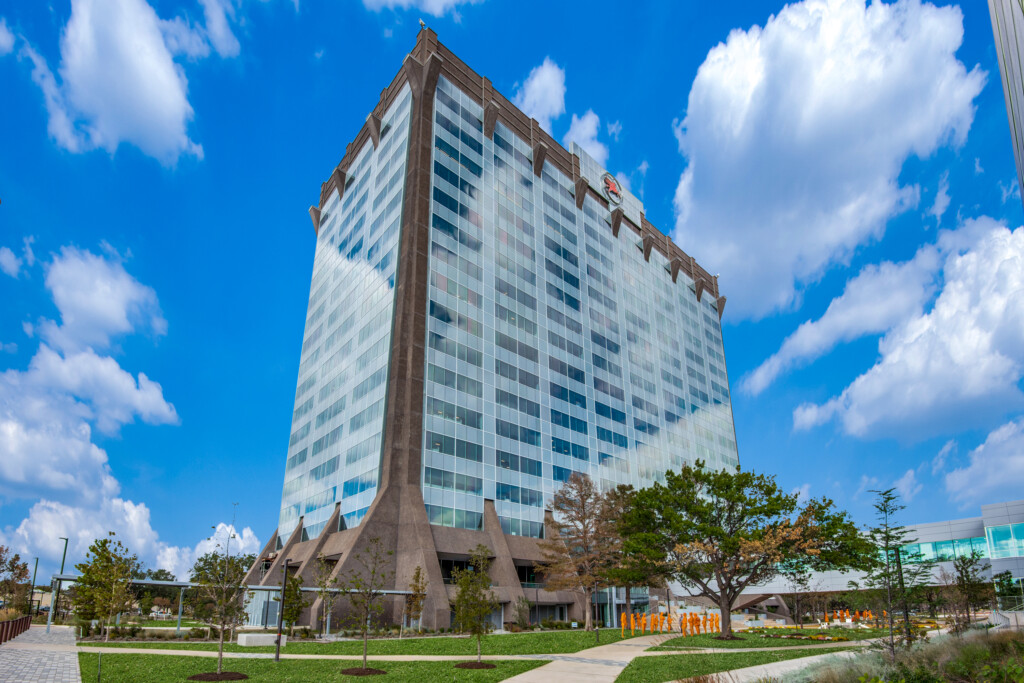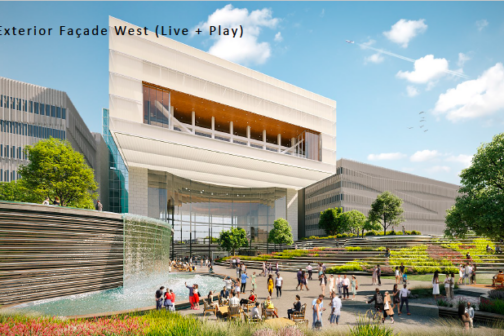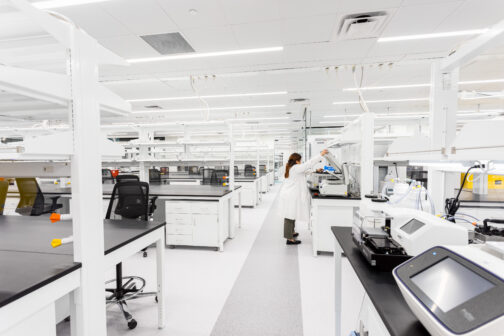The Advanced Research Projects Agency for Health announced an initiative to improve access to and diversify clinical trials at a launch event last week at its newly announced home of Pegasus Park.
Directed by experienced federal administrator Renee Wegrzyn U.S. Department of Health and Human Services created the $2.5 billion federal research funding agency to address the nation’s most pressing health issues with bold programs. It announced that the Customer Experience Hub would be housed at Pegasus Park earlier this month. The event introduced the Advancing Clinical Trial Readiness (ACTR) initiative’s goal of enabling 90 percent of all eligible Americans to participate in a clinical trial within a half hour of their home.
Lyda Hill, whose Lyda Hill Philanthropies is one of the partners developing Pegasus Park, spoke at the event. “Throughout my career, I have been driven to tackle problems that are bold, complex, and some might say impossible. I had a quote from Walt Disney on my desk for years that says, ‘It’s fun to do the impossible. And this is really fun. Welcome to the future.”
ARPA-H will have room for a staff of about 20 people at Pegasus Park, but the agency’s 210 employees will consist of program managers throughout the country. The selected program managers will identify a difficult challenge to be solved, and support and assessment will be provided by ARPA-H until the project is either ended or passed to partners who can scale the solution. It will benefit from being in the epicenter of Dallas healthcare innovation, with BioLabs, MassChallenge, Health Wildcatters, UT Southwestern, and others calling the space, with other biotech innovators like BridgeLabs on the way.
The agency’s Customer Experience Hub is tasked with connecting diverse populations and stakeholders to clinical trials to improve outcomes for new treatments, therapies, and programs. A panel at the launch event discussed the lack of innovation in clinical trials, with many trials being satisfied with one new patient per site per month, a process that makes for stagnant development.
“We are here to take something a concept that is a technical bottleneck and manifest something that’s three generations beyond what we think is possible today,” said Craig Gravitz, a project accelerator in the transition innovation office.
Dr. Eric Peterson, UT Southwestern’s vice provost and senior associate dean for clinical research, said it takes 17 years on average to progress a new treatment from lab bench to patient, a figure that hasn’t improved during a lengthy career. One of the hurdles to quicker and more effective medical innovation is diverse and robust patient pools for clinical trials, which provide representative samples of the populations who will eventually benefit from the innovation.
Trust in the medical system, awareness, and access to clinical trials are all obstacles to diversifying clinical trial pools. A U.S. Food and Drug Administration report on drug trials between 2015 and 2019 showed that trial participants were 7 percent Black and 13 percent Hispanic. According to the census, the U.S. is 13 percent Black and 18 percent Hispanic. That lack of representation could have medical impacts, as a diverse population may react differently to the medicine being tested.
Texas was selected for the Customer Innovation Hub in part because of its diverse population, but ACTR will work with nationwide stakeholders and new technology to improve outcomes. These groups include everything from community health centers and hospitals to retail pharmacies and barber shops. Mike Stebbins, who is a vice president at ARPA-H’s consortium management firm Advanced Technology International, described ARPA-H’s work as leveraging networks of networks to make trials more representative of the potential patient population. “What has worked in reaching those groups for the first time to participate in a clinical trial? And how can they be spokespersons or give us information on how to build trust in new ways and extend our reach?” he asked during the panel.
ACTR will need to solve enrollment and consent questions, decentralize trials in healthcare settings, distribute protocols, and collect data over a wider area. “We’d like to hear your ideas on how to better enroll patients or pre-identified patients for clinical trials so that we can match the right patient to the right clinical trial in a way that isn’t too burdensome on the clinical care teams,” says Andrea Bild, a program manager and professor in the division of molecular pharmacology at City of Hope Medical Center. “We would also like to hear about how to facilitate the consent process so that it’s easier for the clinical teams and the patients. We’d like to hear your ideas on decentralized clinical trial strategies that might effectively reach a broad spectrum of patients.”
R’Kes Starling launched Reveles in Southlake in 2020 for that purpose. The company helps patients undergo clinical trials in their homes using telehealth, electronic consent, in-home nursing support, and home health. EY predicts that by 2024, 50 percent of all clinical trials will be hybrid or remote. Dallas-based Value-based care platform Signify Health has also enabled pediatric cancer trials to be administered at home, allowing immunocompromised children with leukemia to avoid facilities full of sick people with remote monitoring and home health services.
ARPA-H seeks feedback via a Network Activation Call on ACTR on the organization’s website. If you are an organization with relevant experience in its mission, ARPA officials are looking for responses between now and December 1. The official initiative description and funding opportunities will follow in the coming months.
“Our vision was to catalyze the entire health ecosystem by bringing together individuals with innovators to bridge that gap between innovation that happens in a laboratory that can be siloed, from the hospitals to patients in the communities that stand to benefit the most,” Wegrzyn says. “We knew if we were going to launch an agency that would launch these new innovations, we had to create a network that could actually engage patients…We will watch those programs, pursue those scientific achievements, and along the way, engage patients as partners.”
Author







